They could have kept to their usual way of inspecting vehicles since 2005. Watching truckloads of Hazardous Materials (HazMat) carrying petroleum and flammable materials, entering the CBD every day through the Anson Road gantry, it dawned on them that
there might be an even better way to inspect these vehicles. Given the advances in science and technology over the years, we have now greater capabilities to come up with innovative solutions. It used to be that six officers on rotating shifts had
to be deployed there, seven days a week, rain or shine, to check on HazMat driver permits, delivery orders, scan fingerprints and capture key vehicle information. Well now, there’s a self-operating kiosk that makes use of biometrics, CCTVs,
and a voice-video communication system to perform driver screening.
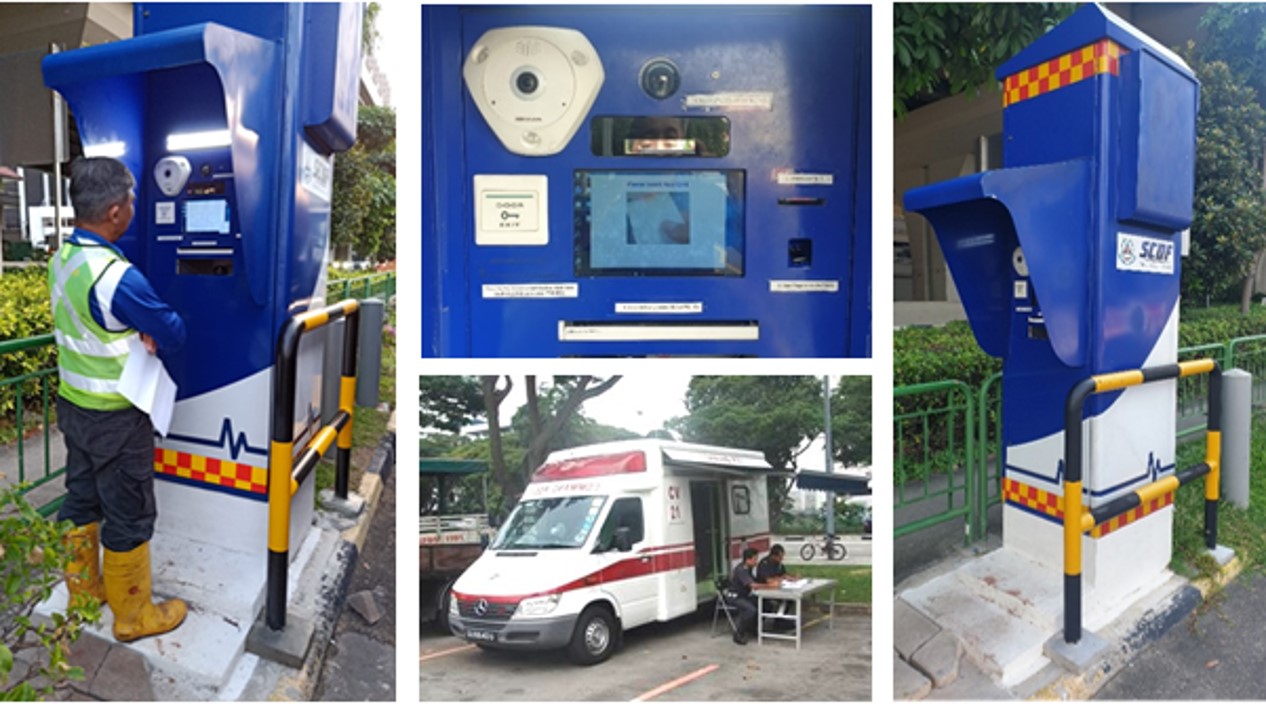 The new self-operating kiosk and its features, as compared with the old way (bottom middle photo) of manual screening (Photos: SCDF)
The new self-operating kiosk and its features, as compared with the old way (bottom middle photo) of manual screening (Photos: SCDF)
This new kiosk is a game-changer for HazMat drivers and former gantry officers, thanks to three individuals who persevered in making this possible. They are SCDF’s MAJ See Chye Seng, MAJ Steve Koa and Mr Dennis Ng, Head (CBRNE & Early Warning
Systems) at HTX’s Civil Defence Programme Management Centre (PMC). MAJ See led the project conceptualisation, MAJ Steve scheduled site tests and coordinated with users on training, while Mr Dennis Ng worked with the system vendor on development
of the infrastructure and IT support network.
For developing the HazMat Driver Verification System (HDVS), the project team recently received the ‘Gold’ award at the Home Team Innovation Awards.
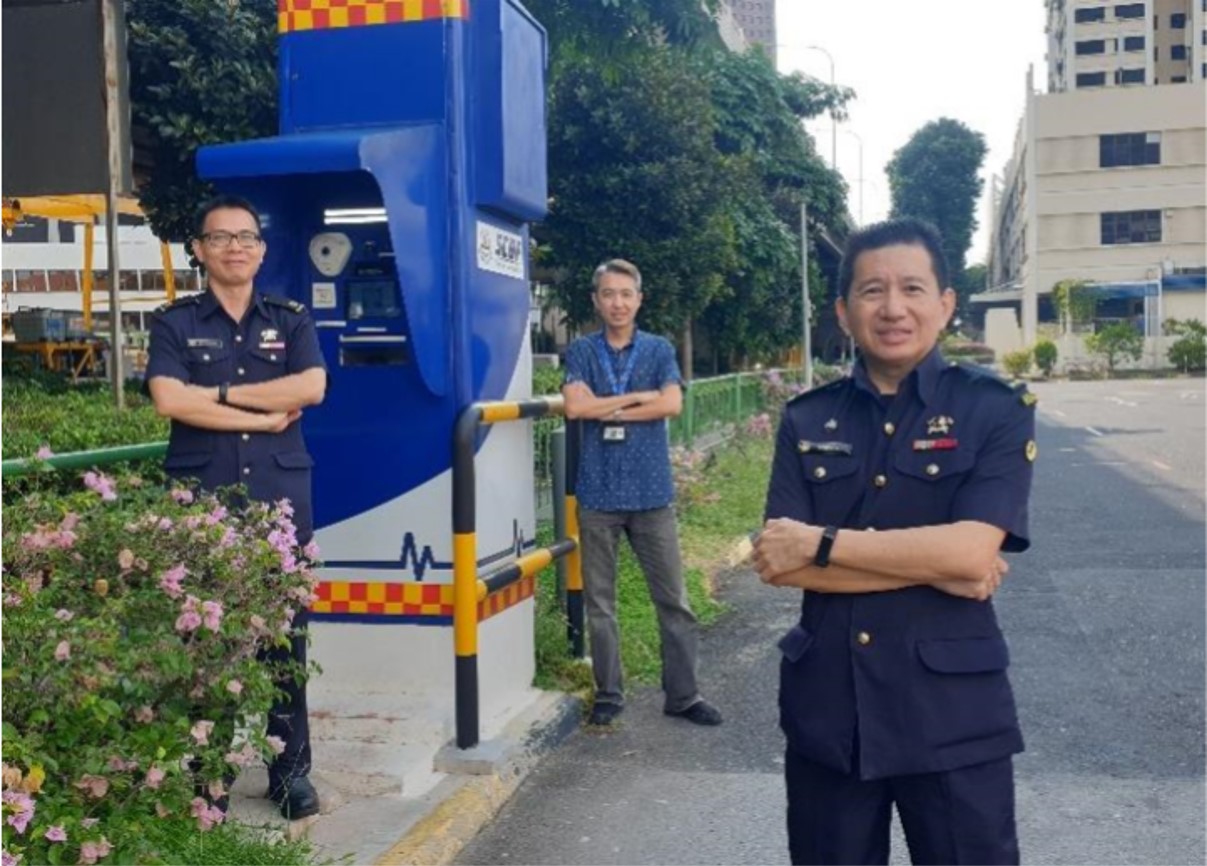 The project team: Major See Chye Seng (left), Mr Dennis Ng (centre-back) and Major Steve Koa (right) (Photo: HTX/SCDF)
The project team: Major See Chye Seng (left), Mr Dennis Ng (centre-back) and Major Steve Koa (right) (Photo: HTX/SCDF)
Catching up with Dennis to find out what he does at HTX, and how he feels about this award, we are reminded once again of how innovation that benefits the public and staff, is no easy feat. More often than not, it involves pure hard work in following
through with a great idea, with persistent problem-solving and dedication to service excellence.
Dennis, in his typical self-effacing and understated way, said “We did not create a new technology. It is already a solution in the market. What we did is to realise the whole system to the user, by applying science and tech.” In other words,
they made it happen! The HDVS was his first turn-key built-from scratch project.
Building up the system was no walk in the park. It took a few years. They went through an elaborate tender process to kick-start its design and development in 2017, and commissioned the system in July 2019. For over six months after that, the team closely
monitored the system’s performance and garnered feedback from users. It was only upon resolving issues, such as ergonomic placement of the scanning devices and the slowing down of the system after prolonged usage, that the system was fully operationalised
in February this year.
The team had to deal with many knotty issues throughout the process. For instance, they had to revise the original design to equip the system with the necessary safeguards against cyber adversaries. The system had to be robust, as sensitive biometric
information such as iris, fingerprint and facial scans were used as part of the verification process. Collaboration with IT vendors and system support administrators was also required to ensure sound connection across the kiosk-and-Ops Centre network,
and for secured login to the portable units used by SCDF officers to carry out ground enforcement checks.
“Dealing with challenging roadblocks is the stressful part of project management. The process can be arduous,” said Dennis, but firm belief in the cause and eventual gains kept him going. He added, “With this system, the gantry officers
can now be re-deployed to take on less routine and repetitive duties, and derive greater satisfaction in work where they can acquire more skills and add more value.”
Benefits of the HDVS
For the users, the verification and processing time per screening is reduced from 20 minutes to 10 minutes. The clearance is also more fuss-free, since the drivers can settle the necessary checks using the system without needing to liaise with gantry
officers. The reduction in manpower and other resources required to run the HDVS system will bring about significant cost-saving of more than $1 million per year.
Beyond all that, security is not compromised, but improved. Previously, the only biometric feature used to authenticate the driver’s identity was fingerprint scanning. Now, the self-operating kiosk authenticates driver’s identity using other
identifiers, such as iris and facial recognition, as well. Four CCTVs have been installed onsite to capture views of the vehicles from different angles for inspection of elements such as the Emergency Information Panel, the vehicle number and transport
licence. The kiosk also comes with a voice-video communication system that allows SCDF Operations Centre to communicate with drivers, when required.
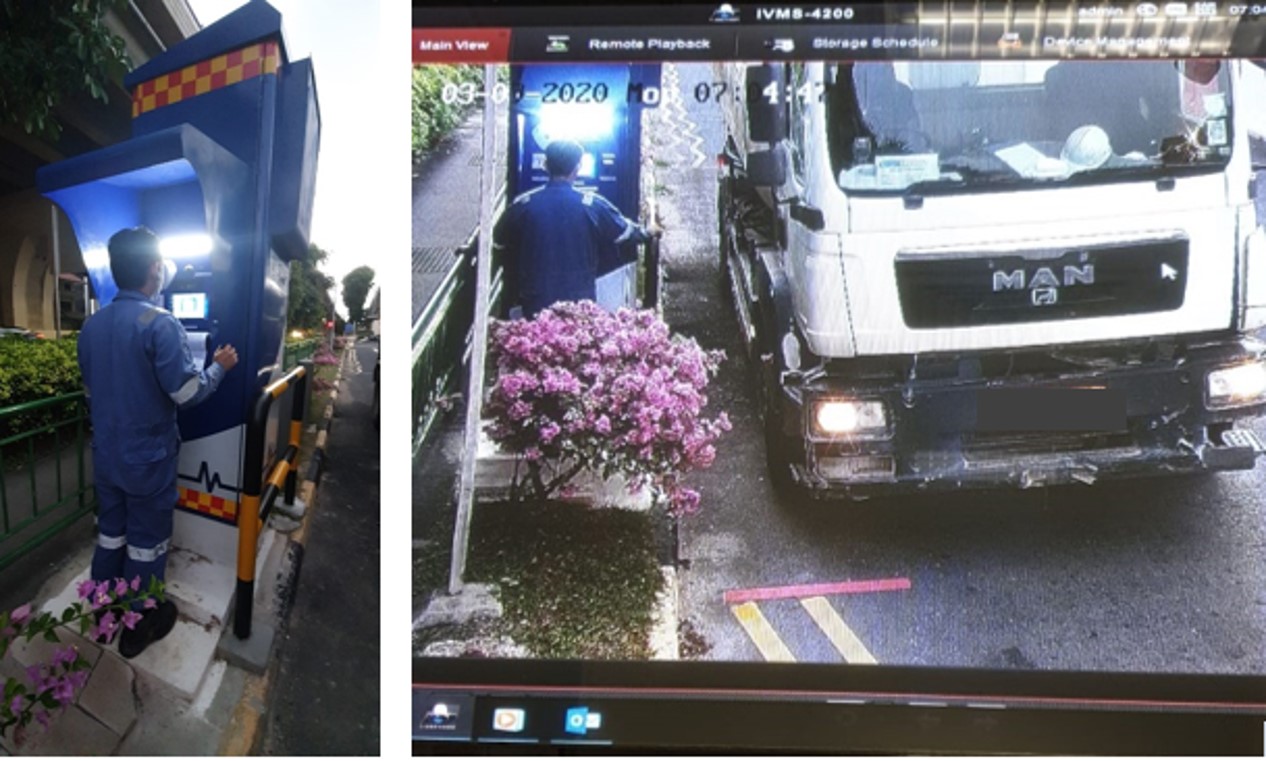 A driver using the kiosk (Photos: SCDF)
A driver using the kiosk (Photos: SCDF)
On the HDVS, Director of the Civil Defence PMC, Ling Kok Yong said, “It is a turn-key innovation project that forms part of the SCDF Transformation Journey where amongst other projects, automation, robotics and process innovation are introduced widely into the Force.” Kok Yong was part of the HDVS project’s steering committee in the early years when the proposal was first put up to SCDF’s senior management for approval. He said, “Dennis played a key role in bringing this exciting project to fruition. The journey was filled with challenges but knowing Dennis and having full confidence in his ability, helped.”
Building the HDVS system from scratch is a feat. For Dennis, who has seen through many demanding projects, whether in the Operations (2012-2016) or Technology (2016-2019) department at SCDF, this is but one of them. On secondment to HTX since July 2019, he has now taken on even more projects than ever, including the next generation Public Warning System (PWS2).
However, Dennis is unfazed. In fact, his friends often joke about his tendency to be landed with challenging projects. He said, “Perhaps, it’s because I’m an impatient person, who needs to see to it that whatever I do translate into outcomes. When there is a long road ahead and so many problems to resolve along the way, seeing blockages being removed is the more immediate gratification and what drives me to keep pushing on.”
This same openness and positive spirit drew him to HTX. He said, “It’s exciting to join this new agency – a force multiplier to help Home Team Departments make use of technology to resolve problems we are facing operationally. I consider it a privilege to have the opportunity to value-add in this way and for my personal development too.
“We used to rely on external organisations a lot to help us deal with tech issues, but now we get to deal with the tech directly and build up our own knowledge and skills. The team now undertakes the capability development responsibilities involving design, development, acquisition and systems integration, in addition to the operations and support management. These span the full spectrum of planning, development and sustainment of emergency response systems to ensure that SCDF continues to be a formidable life-saving force.
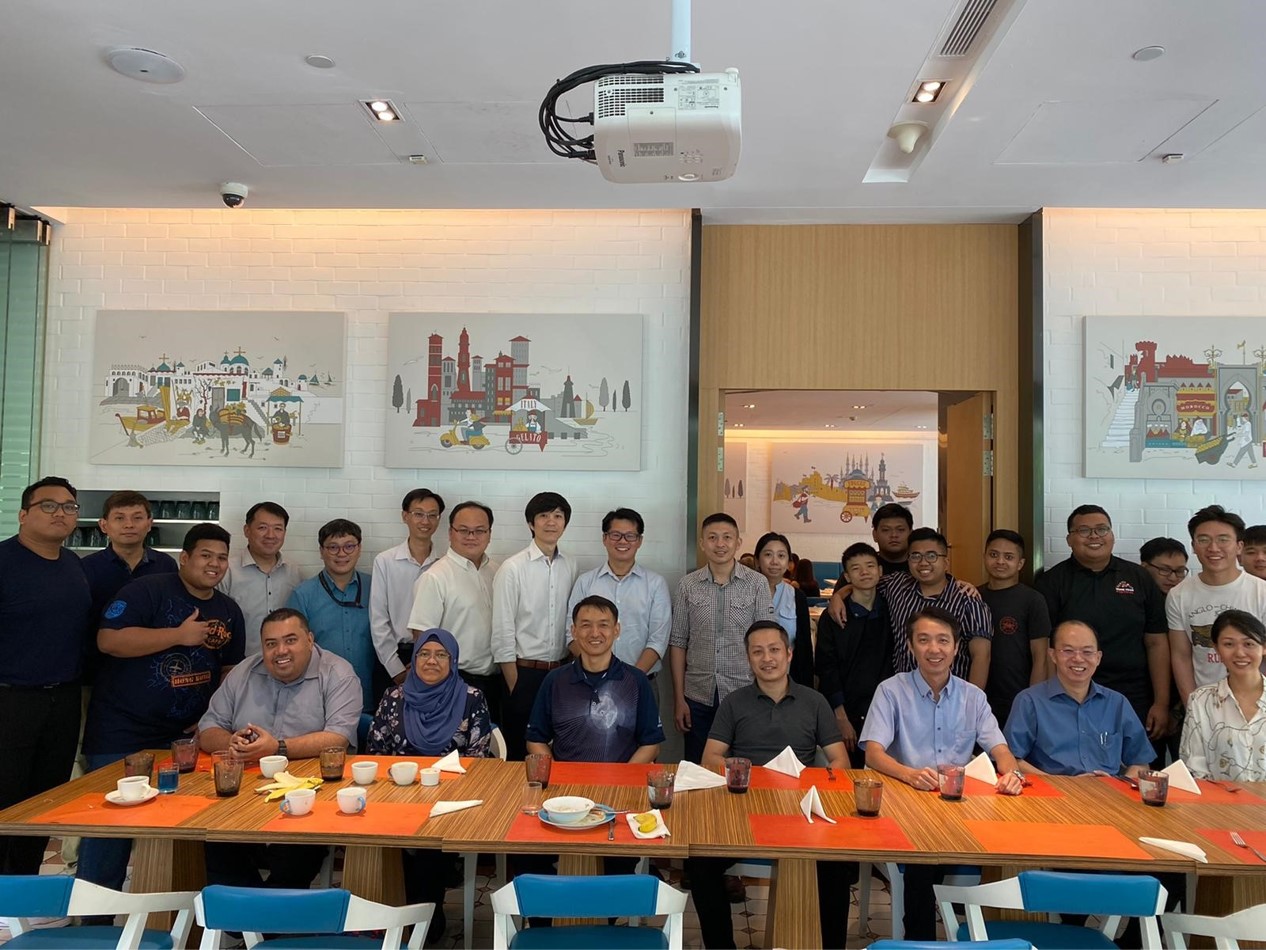 Director Kok Yong (seated, 3rd from left), Dennis (5th from left), and their Civil Defence PMC teammates (Photo: HTX)
Director Kok Yong (seated, 3rd from left), Dennis (5th from left), and their Civil Defence PMC teammates (Photo: HTX)
Once an SCDF’s frontline officer, Dennis has many fond memories of his two years (2009-2011) as a Rota Commander at Clementi Fire Station. During his stint, Dennis was involved in a number of intense firefighting and rescue operations. One of the most memorable was when his team rescued a number of people stranded in a fire at a construction site in 2010, for which he and his team members were conferred the Minister’s Award for Operational Excellence.
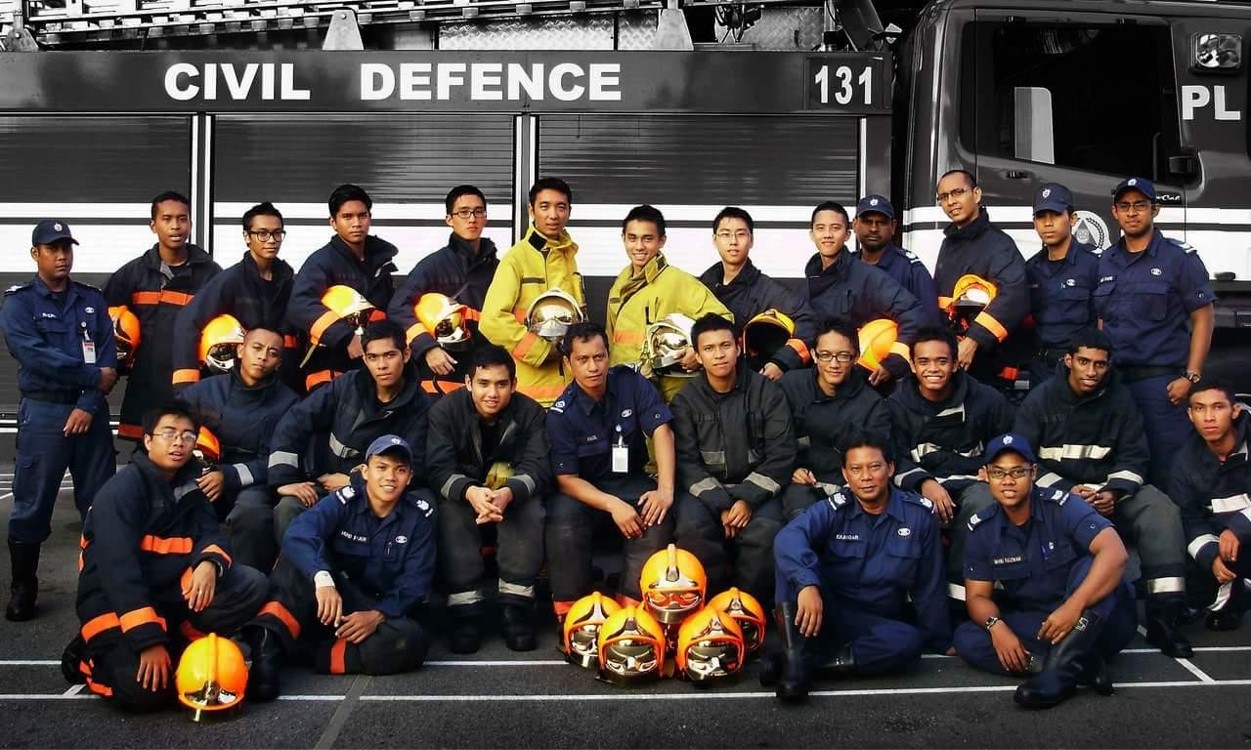 Dennis (6th from left, in yellow suit) with colleagues from Clementi Fire Station (Photo: SCDF)
Dennis (6th from left, in yellow suit) with colleagues from Clementi Fire Station (Photo: SCDF)
By comparison, life is very different for Dennis now. Although still dealing with safety and emergency matters, Dennis has moved from doing the operational work to enabling technologies for operations. Project management may sound prosaic, but it has its own excitement and curveballs, and potential to disrupt the usual way of doing things. It takes a Dennis and many like him at the PMCs to value the cause, quietly deal with the daily grind together with internal and external counterparts, and innovate using science and technology to make Singapore a safer and more secure place to live in.